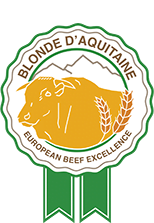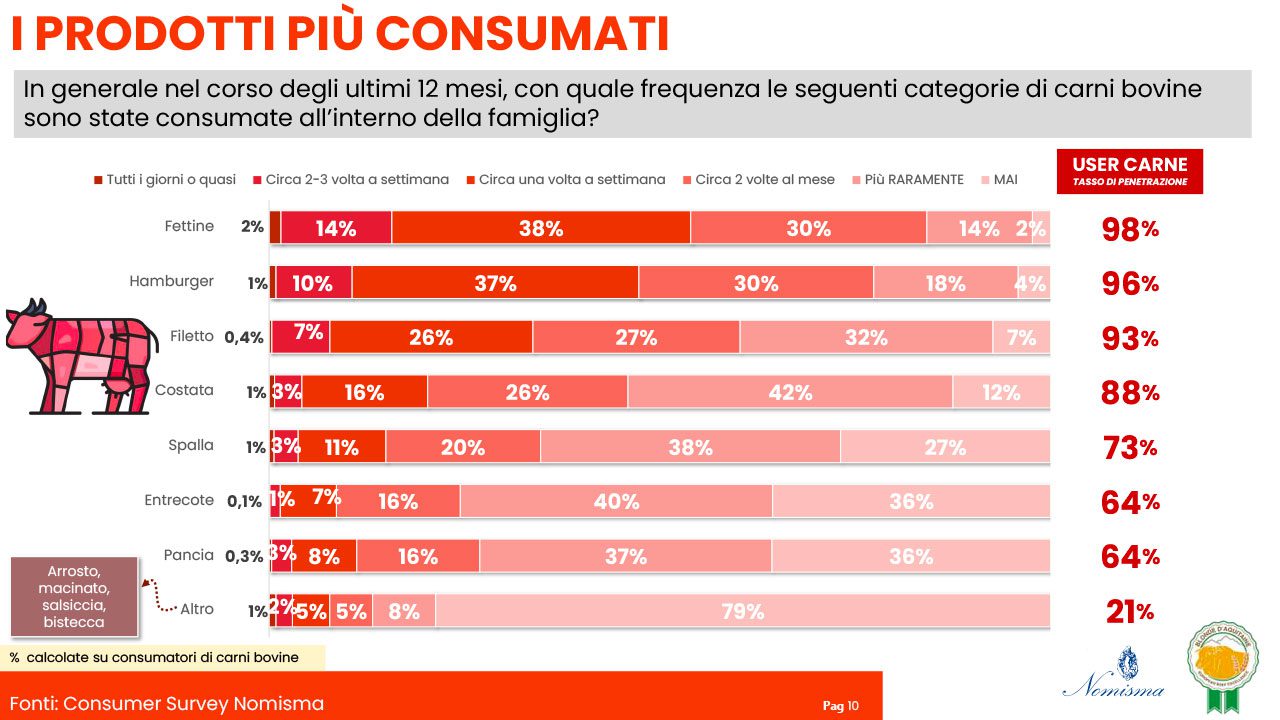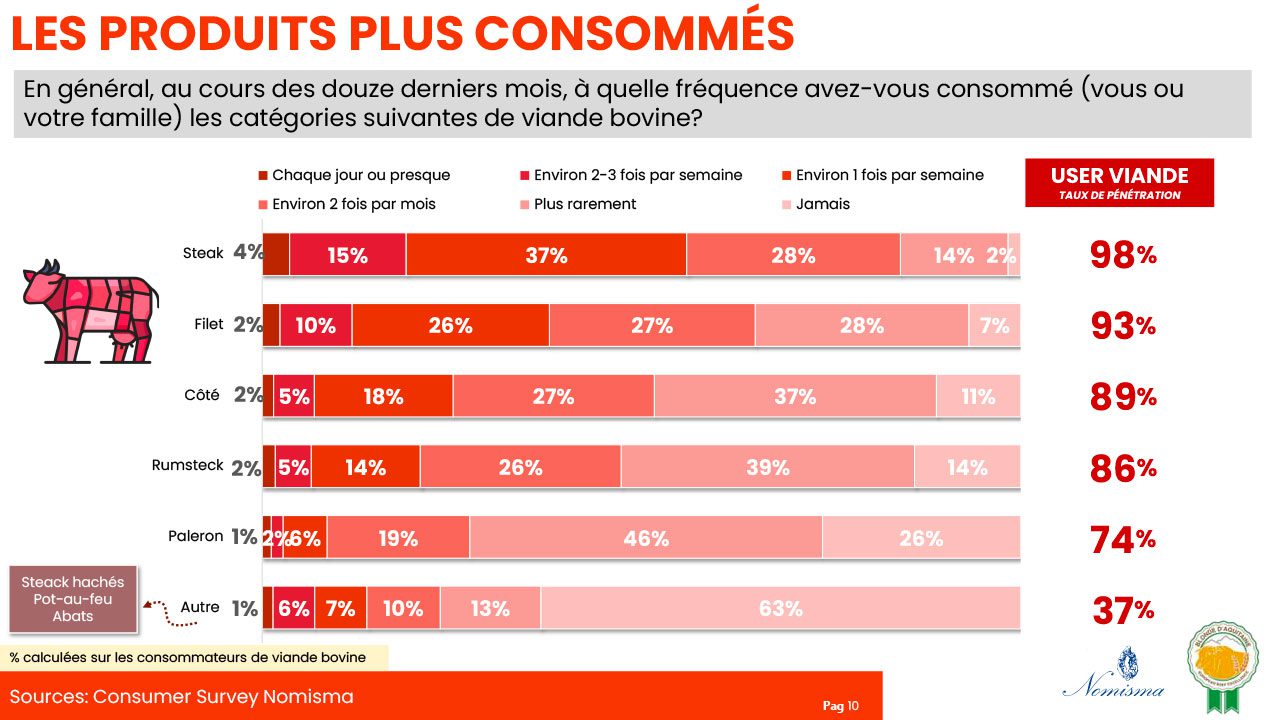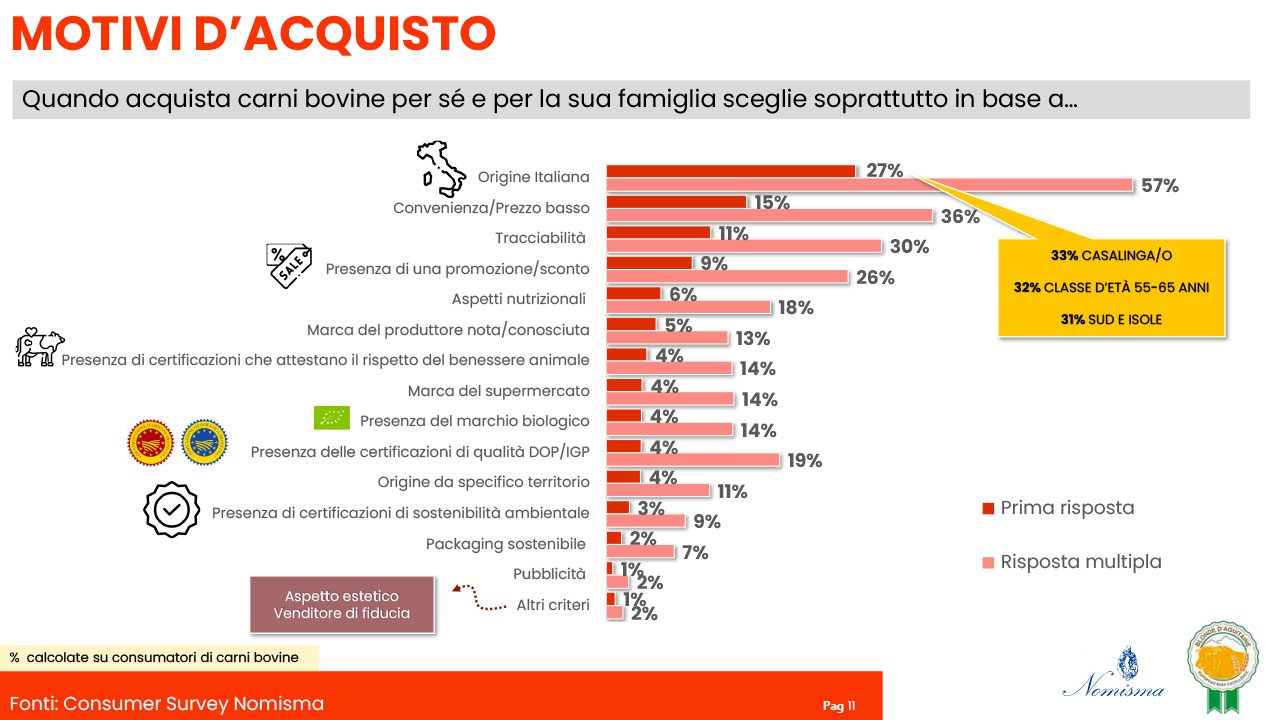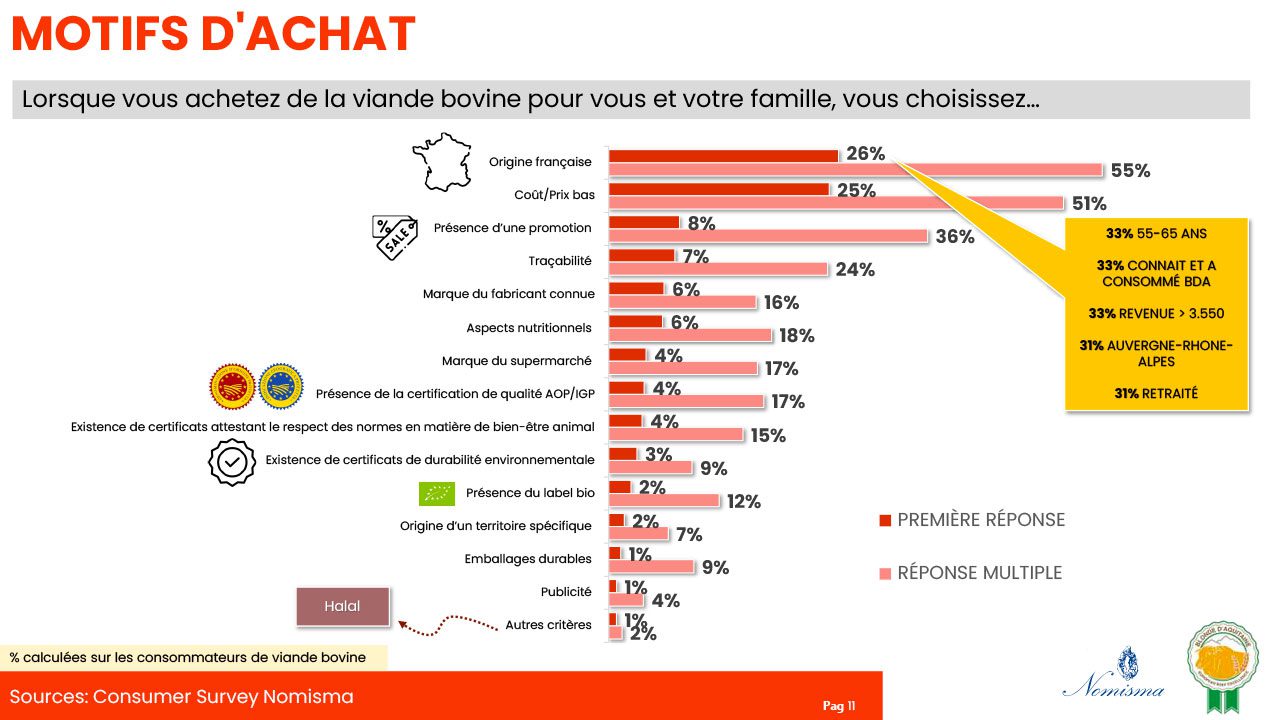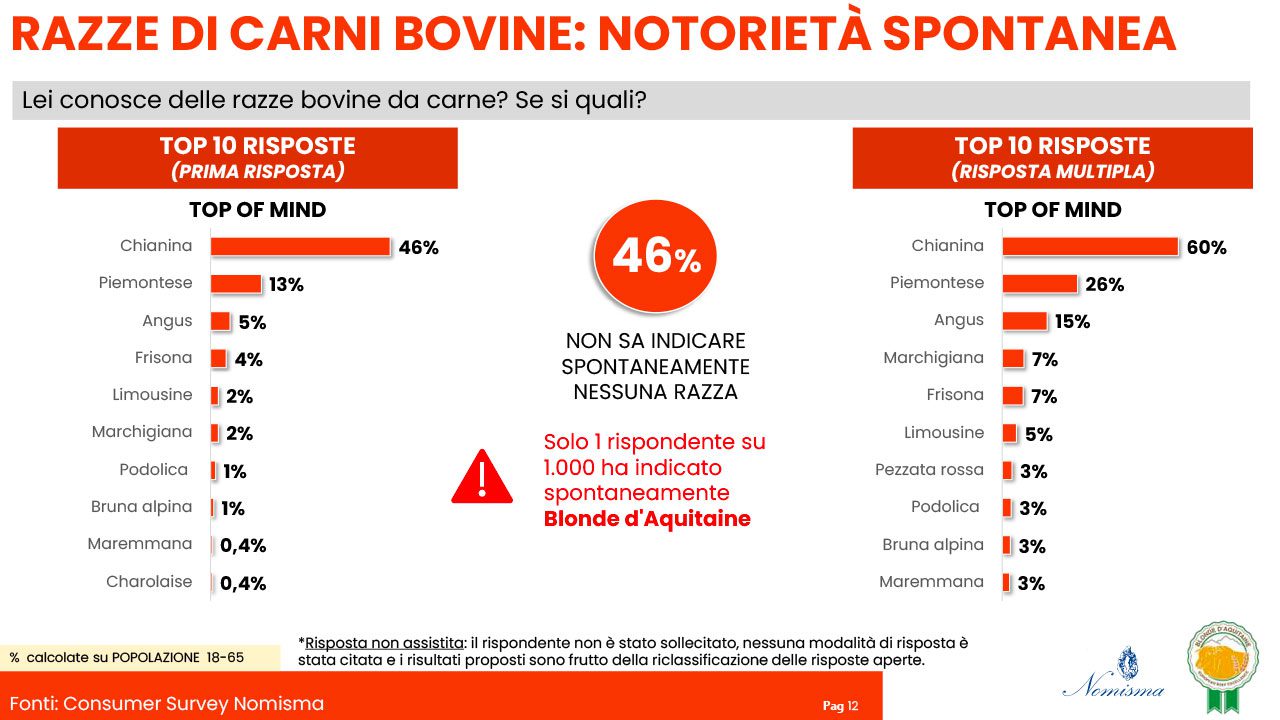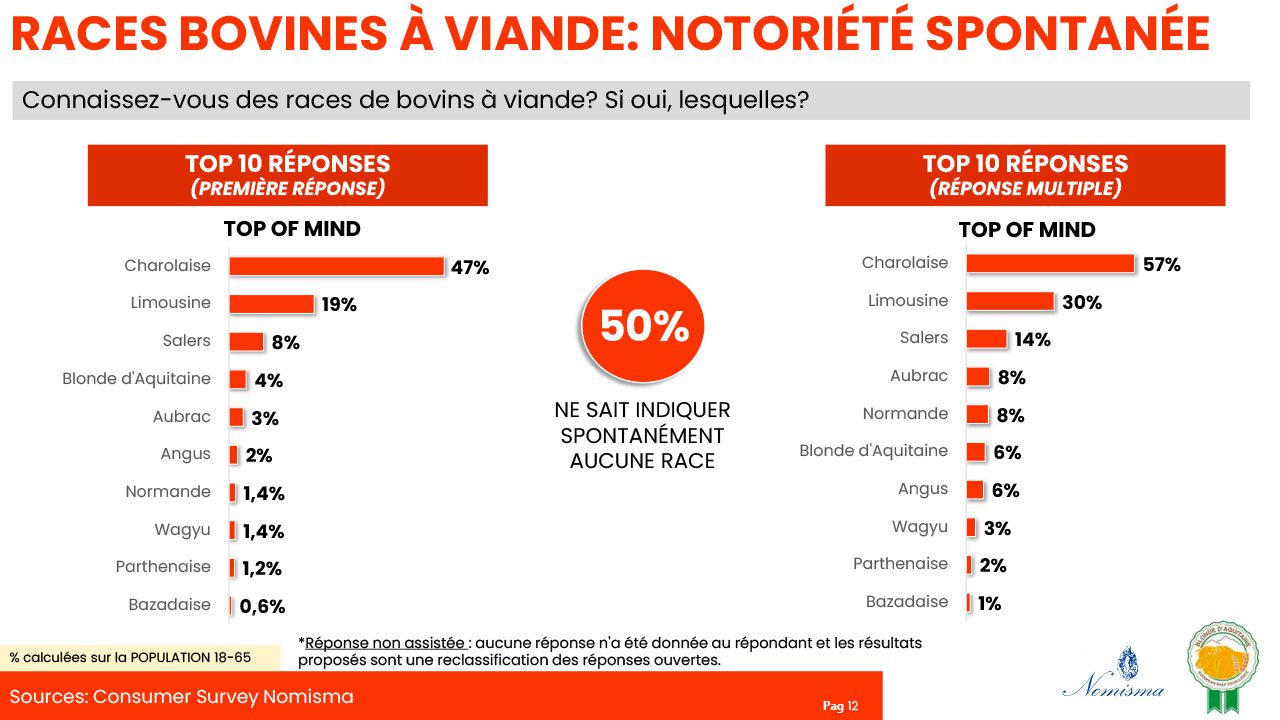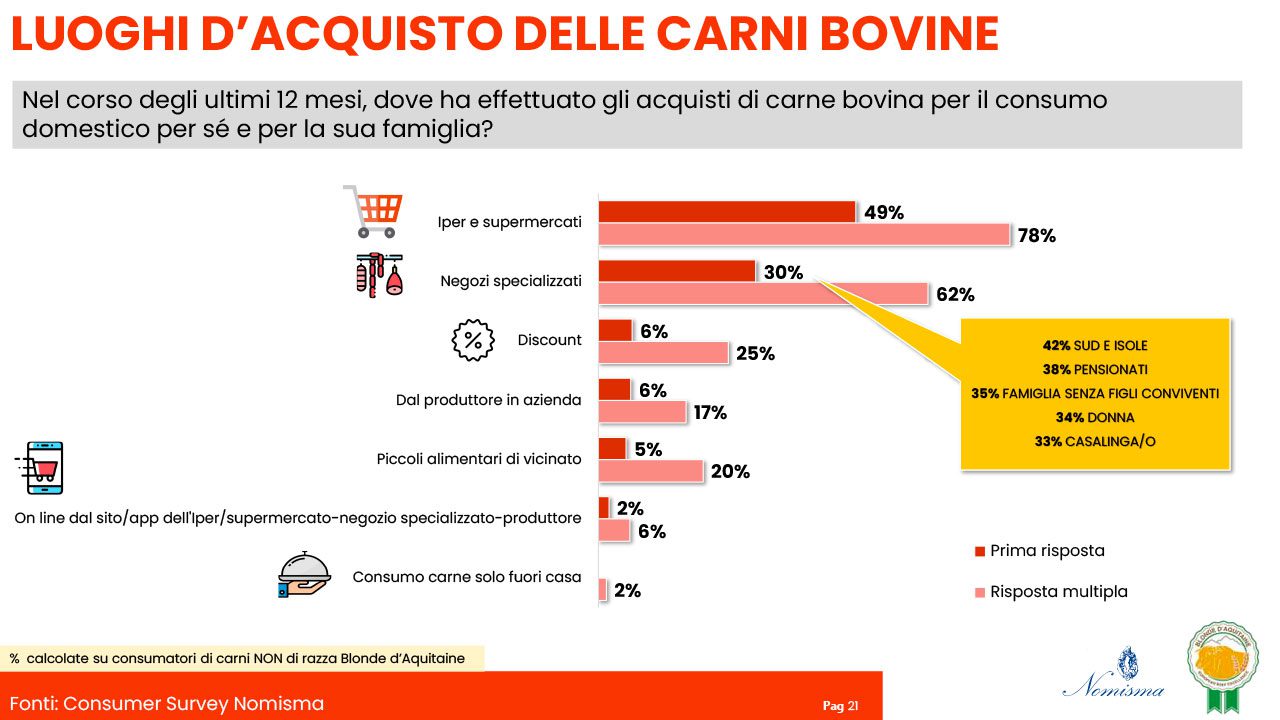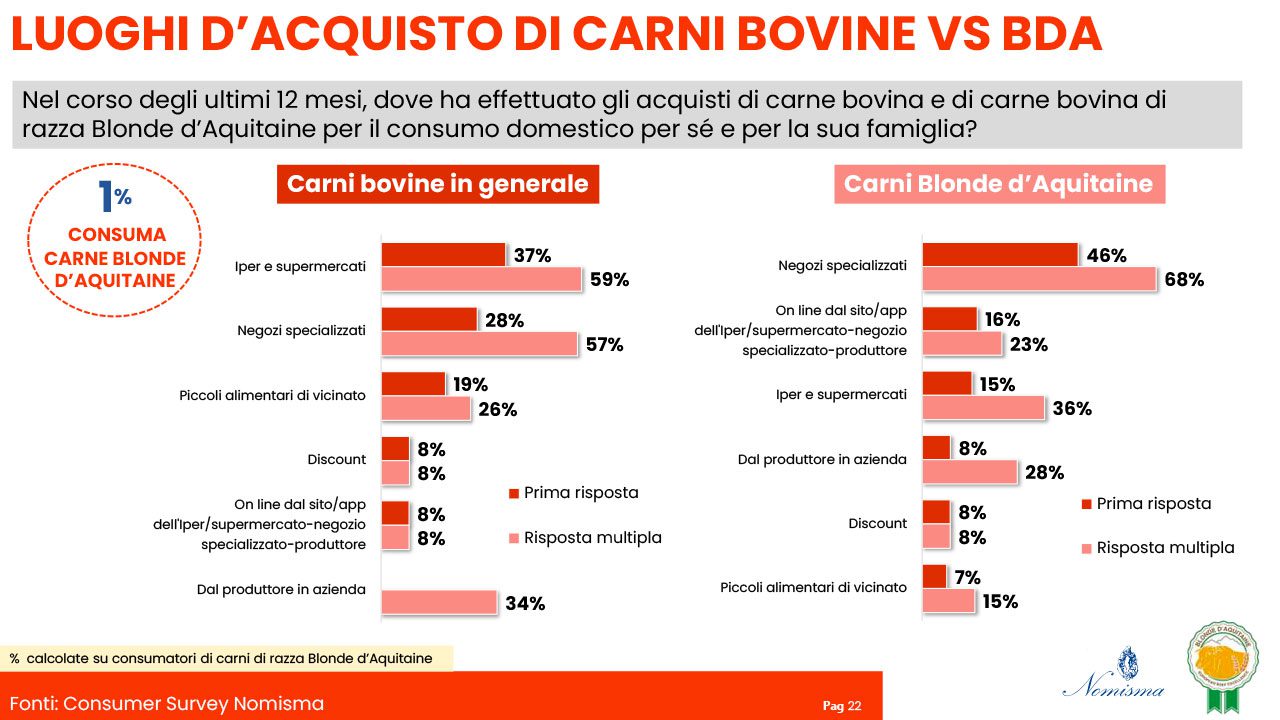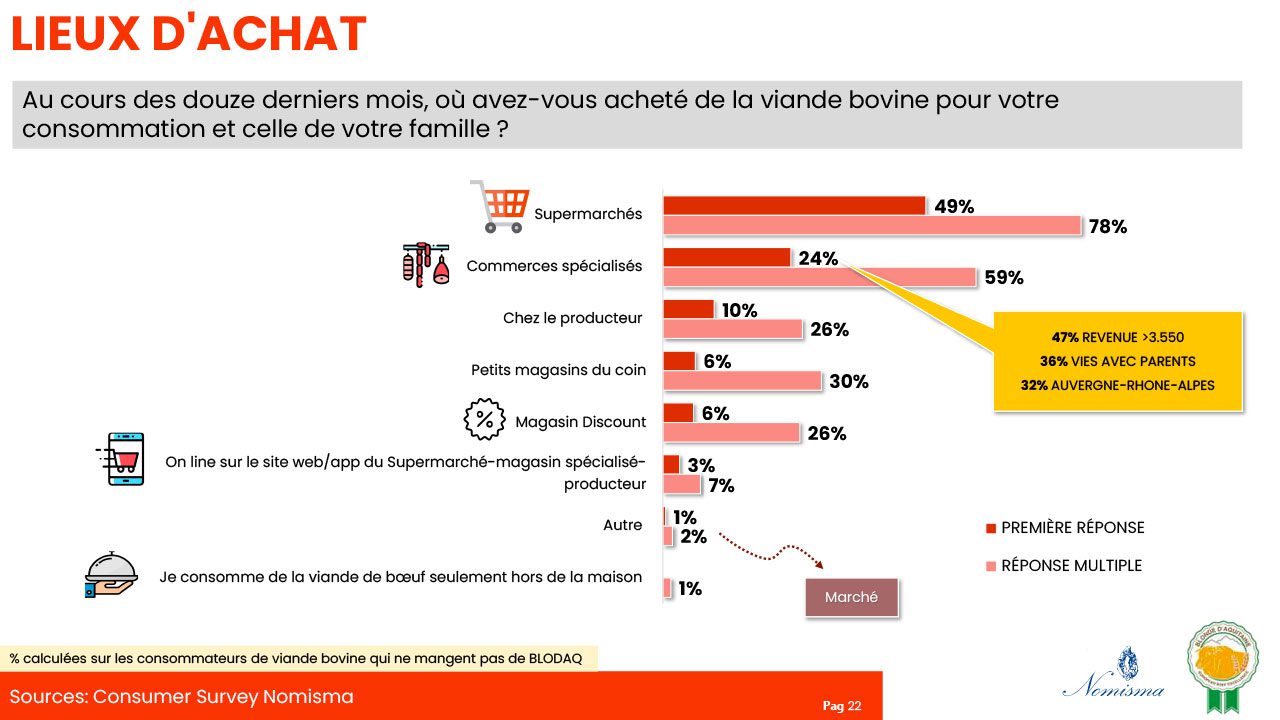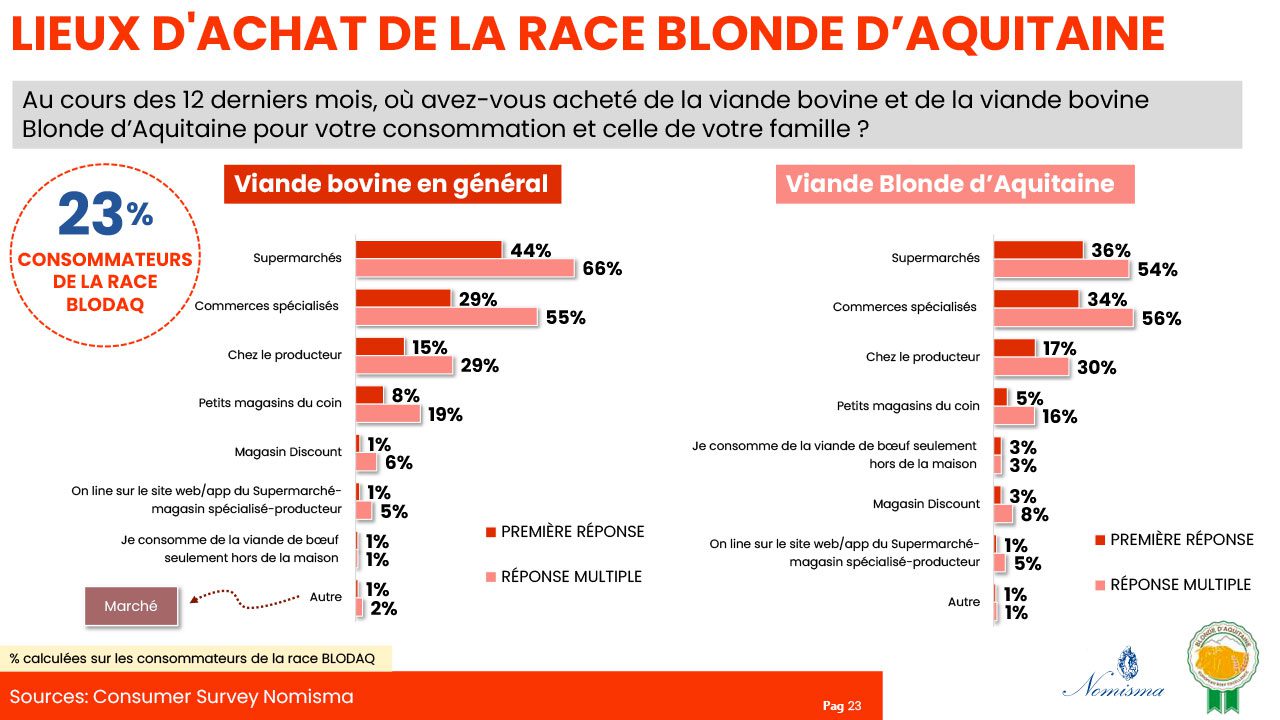
What does EUBLODAQ2 mean?
EUBLODAQ2 is the seemingly mysterious acronym for the project Blonde d’Aquitaine: European Beef Excellence, promoted by the European Union, which actually very simply summarises the promotion campaign activated by Europe (EU) focusing on the Blonde d’Aquitaine (BLODAQ). The number 2 indicates that this is the second project (lasting three years, co-financed by the European Union and jointly managed by Asprocarne Piemonte and France Blonde d’Aquitaine Sélection) specifically dedicated to Blonde d’Aquitaine meat within the framework of European Beef Excellence promoted by the European Union.
The declared and immediate objective of the project is to raise awareness of Blonde d’Aquitaine beef in Europe, particularly in Italy and France. It is important to stress that this objective is part of a wider framework, which aims to provide not only those involved in the meat supply chain (both producers and consumers) but also all European citizens with the tools to make informed purchase choices. It is a matter of promoting greater awareness of food quality and safety, not forgetting the protection of the environment and respect for animal welfare, through requirements for a proper management of livestock farms.
The Consumer Survey by Nomisma
In addition to information campaigns, the EUBLODAQ2 project includes regular monitoring and evaluation surveys about the market and consumers, aimed at understanding beef purchasing habits, with a focus on Blonde d’Aquitaine meat, as well as measuring the awareness of current and potential consumers. In this regard, the Consumer Survey report conducted by Nomisma is illuminating in several respects.
Thanks to their consolidated expertise in the agri-food sector and in consulting and strategic advisory services, Nomisma is a company that has given an important contribution to the EUBLODAQ2 project in terms of market intelligence.
Reading the data of their dossier gives us very interesting insights about the research. In particular, after we examined the differences between the French and Italian markets in relation to the focus of the research – that is Blonde d’Aquitaine meat – in the previous article, we now wish to highlight the most significant data on the eating habits of beef as a whole.
The most consumed beef products
As far as Italian consumers are concerned, the most consumed beef products include cutlets, hamburgers, fillets and ribs. Apart from the dominance of cutlets, which are found on the tables of all Italians, what emerges is a sort of split, with two different reference products as protagonists: on the one hand, about 80% of Italians are regular consumers of hamburgers (50% eat it at least once a week), a product now consolidated in the diets of Italian families, both because of its wide and diversified presence in purchase and consumption channels (from supermarkets to butchers’ shops, from gourmet to fast-foods restaurants) and because of its ease of use. On the other hand, more than 50% of the Italian sample choose fillets or ribs at least once a week – that is, traditionally the most valuable and expensive cuts, and with a more sophisticated preparation.
We can conclude that the Italian beef market tends to be polarized, despite the variety and richness of the offer.
On the other hand, when analysing the French market, steaks and fillets are the most popular cuts, with respectively 98% and 93% of beef consumers having eaten it at least once in the last year.
If we look at the purchase reasons, we notice that the national origin of meat is the first driver, with shares almost equal in the two markets (27% Italy, 26% France), followed by price (with greater attention in the French market – 25% against 15% in Italy). Traceability ranks third in Italy and fourth in France (after the presence of promotions or discounts, recalling price sensitivity among French consumers).
Awareness
If we then dwell on the part of the research that investigates consumer knowledge and awareness, we see that almost half of the target group (46% in Italy, 50% in France) cannot spontaneously mention any beef cattle breed. The remaining half cite in an almost unanimously either the Chianina breed (in Italy) or the Charolaise breed (in France). With much smaller shares, the Piemontese and Angus followed in Italy, whereas the Limousine, Salers and Blonde d’Aquitaine did so in France. It should be noted that in Italy only one out of 1.000 people mentions the Blonde d’Aquitaine among breeds they know.
Purchase channels
In both Italy and France, almost 50% of beef consumers buy it primarily in supermarkets, but in both samples we also detect a 6% share related to discount stores.
What partly differentiates the two markets is a slightly higher reliance on specialised shops in Italy (30% vs. 24% in France), and speculatively French consumers show a slightly higher preference for buying directly from producers (10% vs. 6% in Italy).
With regard to the purchase of Blonde d’Aquitaine beef, the places of purchase follow particular dynamics. In fact, it should be noted that in Italy specialised shops, both off-line and on-line, are preferred (46% and 16%, respectively), which conveys how this product is perceived as high-profile. On the other hand, in France, where Blonde d’Aquitaine meat is widely consumed, it is bought equally in supermarkets and specialised shops (respectively 36% and 34%), but there is also a significant share of preferences for buying directly from producers (17%), whereas online shopping is irrelevant (1%).
Purchase channels
In both Italy and France, almost 50% of beef consumers buy it primarily in supermarkets, but in both samples we also detect a 6% share related to discount stores.
What partly differentiates the two markets is a slightly higher reliance on specialised shops in Italy (30% vs. 24% in France), and speculatively French consumers show a slightly higher preference for buying directly from producers (10% vs. 6% in Italy).
With regard to the purchase of Blonde d’Aquitaine beef, the places of purchase follow particular dynamics. In fact, it should be noted that in Italy specialised shops, both off-line and on-line, are preferred (46% and 16%, respectively), which conveys how this product is perceived as high-profile. On the other hand, in France, where Blonde d’Aquitaine meat is widely consumed, it is bought equally in supermarkets and specialised shops (respectively 36% and 34%), but there is also a significant share of preferences for buying directly from producers (17%), whereas online shopping is irrelevant (1%).
